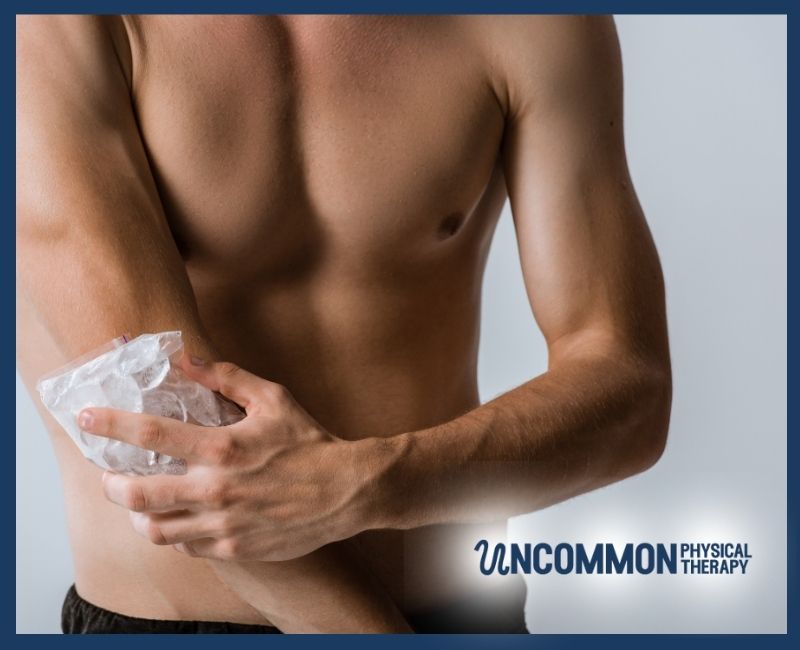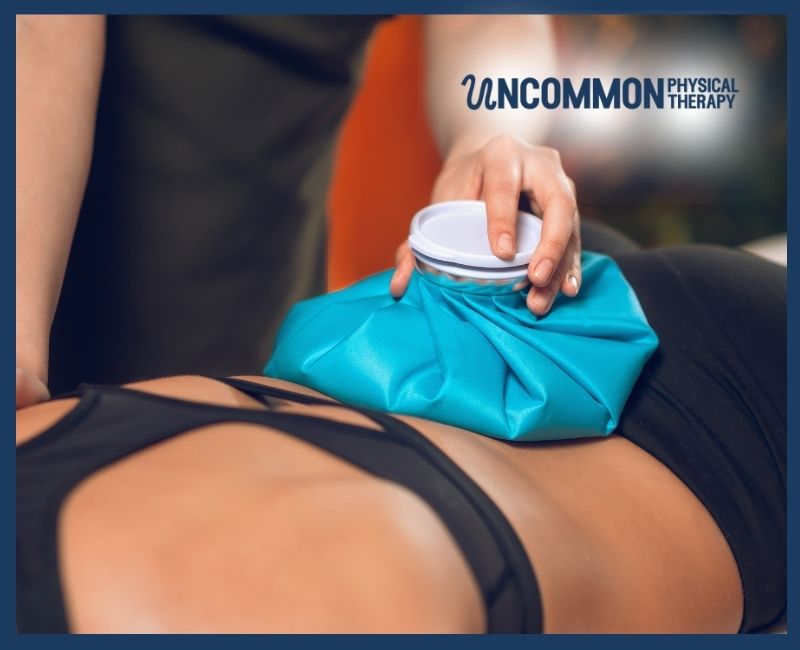When an injury causes pain, the first question often is: Should I use heat or ice? Using the wrong one can make things worse. This simple guide helps you choose the right remedy to safely and effectively relieve your pain.
Heat and ice are both powerful tools for recovery, but knowing when to use them is key. Ice is generally best for reducing swelling and calming down sharp, acute pain after an injury, while heat helps relax tight muscles and ease stiffness from chronic conditions. Not sure which one is right for your situation? That’s where the guidance of a licensed physical therapist can make all the difference. At Uncommon Physical Therapy, Davis and his team will walk you through when and how to use heat or ice, so you can get the most relief and avoid setbacks.
But does it matter which one you use for an injury? This article will help you sort it out.
When Either Heat Or Cold Will Do
Soothe aches and pains caused by conditions like osteoarthritis, rheumatoid arthritis, back pain, fibromyalgia, and neck pain with either heat or cold. Each can give you relief from these symptoms:
- Muscle aches, spasms, and pains
- Lower and upper back pain
- Stiff, swollen, or tender joints
- Neck stiffness
- Finger, hand, or wrist pain
- Knee pain
For short-term pain relief of any of these conditions, apply a hot or cold compress using any of these items:
- An electric heating pad
- A gel pack that can be microwaved or frozen
- A bag of ice or frozen vegetables
- A washcloth or small towel soaked in hot or cold water (wring it out, fold it, and apply to the sore area)
Apply to the painful area for 15-20 minutes several times each day.
Whether you use heat or cold, you may notice your skin looks a little pinker after applying the compress. That’s normal, but let your skin return to its normal color and temperature before applying fresh ice or heat.
Call your doctor if you notice any of the following signs after removing the compress. These symptoms mean the temperature was too extreme and may have caused skin damage:
- Skin that’s purplish-red, dark red, or a spotty red and white color
- Hives
- Swelling
- Blisters
Hydrotherapy
Showers and baths aren’t just for mornings. When you’re hurting, stand under or settle into warm water for a few minutes to help soothe and relax you. (If you’re over 70 or have heart problems, check with your doctor before getting into a hot tub.)
Use cool water after exercise to help calm deep, burning pain and reduce inflammation.
Or you can mix it up with a contrast bath to increase blood flow, reduce pain and swelling, and promote healing. Get two tubs or containers large enough for your painful area ready with warm and cold water. Soak in the warm tub for about 5 minutes and then plunge into the cold tub for about 1 minute. Go back to the warm for a few more minutes and then the cold for a minute. Repeat four or five times.
Warm Clothes
Want an easier — and less painful — start to your day? Warm your clothes in the dryer for a few minutes before you put them on. The heated garments may help ease morning pain and stiffness.
Heat Wraps
If heat helps ease your pain, try a continuous low-level heat wrap, available at drugstores. You can wear a heat wrap for up to 8 hours, even while you sleep. Follow the directions carefully.
Studies suggest that low-level, long-term heat applied directly on the skin can significantly reduce stiffness and tension and increase flexibility. The effects can last for 48 hours or longer.
Heated Wax Therapy
Another way to apply heat — especially to hands, elbows, and feet — is warm, melted paraffin.
You can buy paraffin wax kits at your local drugstore or beauty supply. A heated container safely melts the wax and mineral oil to make a paraffin bath. Dip your achy body part into the bath several times to build up a warm layer. Take it out of the bath, and cover it with plastic and wrap in a towel for 10-15 minutes until the wax cools. Unwrap and peel the wax away.
To avoid irritation and pain, make sure the skin that you treat has no cuts or sores.
Struggling with persistent pain? Let us help you find lasting comfort and confidence in your recovery. Schedule your appointment with Uncommon Physical Therapy in Charlotte today at (704) 803-8038, and follow us on Instagram @uncommonphysicaltherapy for more tips, insights, and inspiration.
Reference: [https://www.webmd.com/pain-management/cm/use-heat-ice-pain]





